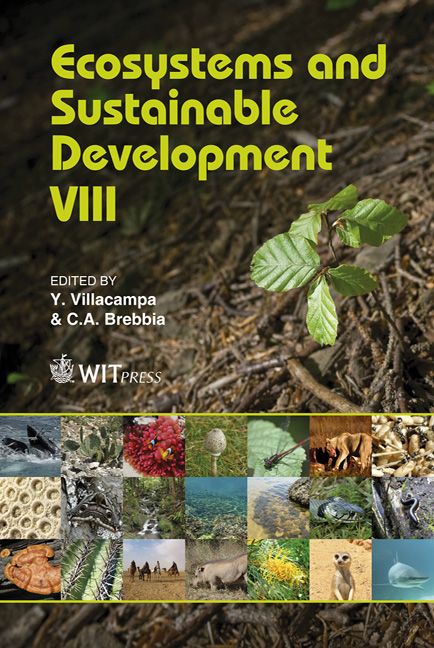Sustainable And Unsustainable Agriculture In Ghana And Nigeria: 1960–2009
Price
Free (open access)
Transaction
Volume
144
Pages
12
Page Range
211 - 222
Published
2011
Size
2,409 kb
Paper DOI
10.2495/ECO110191
Copyright
WIT Press
Author(s)
S. Onyeiwu, E. Pallant & M. Hanlon
Abstract
The agricultural sector of African economies has faced considerable challenges within the past 50 years or so. Although agricultural production on the continent rose by an annual average of 2% between 1965 and 1980 and has continued to increase by 1.8% annually since then, population growth of 2.9% per year has resulted in a per capita decline in agricultural production. From self-sufficiency in food production before the 1960s, many African countries have become net food importers, with a handful of them facing severe food shortages arising from drought, desertification, climate change and wars. In this paper we use the case of Ghana and Nigeria to explore some of the salient dynamics that have resulted in the current crisis in the agricultural sector of African economies. We argue that soil conditions, climate change, and population growth, in combination with ineffective economic policies, have contributed immensely to the sordid state of agriculture in Africa. We use historical and contemporary evidence gathered from Ghana and Nigeria during several visits to show how economic policies have interacted with biophysical and environmental factors to generate an unsustainable use of land, agricultural labor, and natural resources. Keywords: Ghana, Nigeria, sustainable agriculture, climate, structural adjustment, environmental economics, sustainable development, Sub-Saharan Africa. 1 Introduction Most analysts agree that African agriculture has been on an unsustainable path for the past five decades or so; however, there is no consensus on the factors responsible for this unsustainability [1–3]. Explanations of the causes of the and Biology (respectively), Allegheny College, USA
Keywords
Ghana, Nigeria, sustainable agriculture, climate, structural adjustment, environmental economics, sustainable development, Sub-Saharan Africa





